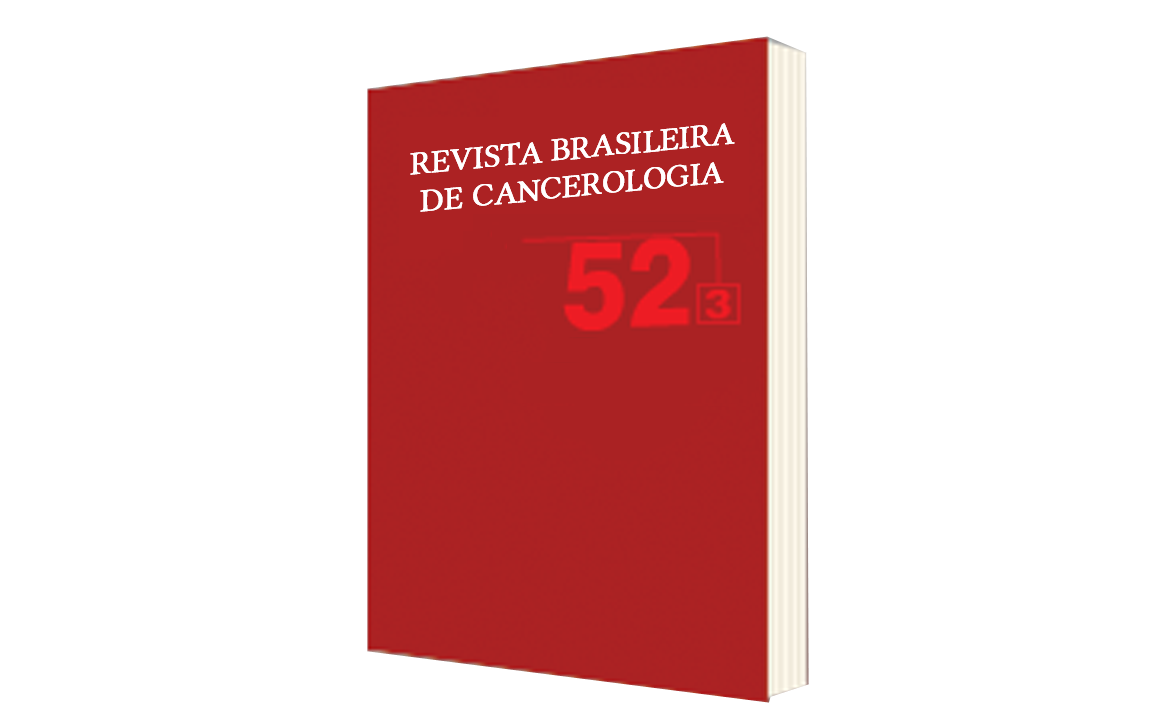Valor prognóstico do grau histológico (GH), grau nuclear (GN) e índice mitótico (IM) para pacientes com carcinoma da mama estádios II e III com linfonodos axilares comprometidos
DOI:
https://doi.org/10.32635/2176-9745.RBC.2006v52n3.1871Palavras-chave:
Neoplasias mamárias, Prognóstico, Índice mitóticoResumo
Objetivo: Avaliar o grau histológico (GH), grau nuclear (GN) e índice mitótico (IM) como fatores prognósticos para metástase em pacientes com carcinoma da mama, estádios clínicos II e III com linfonodos axilares comprometidos. Métodos: Cinqüenta e três pacientes foram submetidas a tratamento cirúrgico primário, através de mastectomia radical (Halsted) ou radical modificada (Patey), à quimioterapia e à radioterapia em parede torácica e fossa supraclavicular. O esquema quimioterápico compreendeu fluoracil, adriamicina e ciclofosfamida para pacientes com 50 anos ou menos; fluoracil, metrotrexate e ciclofosfamida para pacientes com mais de 50 anos. A presença de doença sistêmica foi, inicialmente, descartada e todas essas pacientes foram avaliadas por período mínimo de cinco anos ou até o aparecimento de metástases. O GH foi determinado através do método de Scarf-Bloom-Richardson modificado, o GN pelo método de Black modificado e o IM em dez campos de grande aumento (CGA) na periferia do tumor. Resultados: Das 53 pacientes, 27 (50,9%) apresentaram metástases à distância. Destas, 18,5% eram portadoras de tumores GH I (5/27); 14,8% GH II (4/27) e 66,7% GH III (18/27). Vinte seis (49,1%) pacientes não apresentaram metástases. Destas, 38,4% foram classificadas como grau I (10/26), 15,4% como grau II (4/26) e 46,2% como grau III (12/26). O estudo do GN demonstrou que, das pacientes com metástases, 3,7% (1/27) apresentavam tumor grau I, 22,2% (6/27) tumores grau II e 74,1% (20/27) tumores com grau III. Das sem metástases, 19,2% (5/26) foram grau I, 34,6% (9/26) grau II e 46,2% (12/26) tumores grau III. Em relação ao IM, das pacientes com metástases, 14,8% (4/27) apresentavam até cinco mitoses em 10 CGA, 25,9% (7/27) seis a dez mitoses e 59,3% (16/27) mais de dez mitoses. Em relação às sem metástases, 38,5% (10/26) apresentavam até cinco mitoses, 42,3% (11/26) seis a dez mitoses e 19,2% (5/26) mais de dez mitoses. Conclusões: Os resultados demonstraram que o IM se associou com metástases à distância. Por outro lado, o GH e o GN não.









